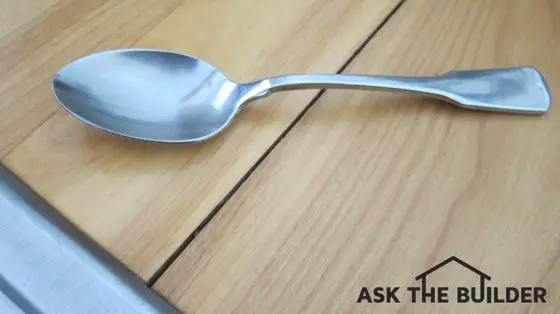How to Fill Wood Cracks

How to Fill Wood Cracks | These cracks in a butcher block countertop need to be filled and sealed before any additional water seeps into them. Photo Credit: Tim Carter
Quick Column Summary:
- How to use wood filler
- Hard to match the look of wood
- Filler keeps stain uneven
- Wood conditioners can help
DEAR TIM: I’ve never had great success filling cracks in stained wood surfaces. I’ve tried different wood fillers and the crack looks the same or worse after the repair. When I use some fillers before I stain the wood, the stain is blotchy around the repair. I’ve just about given up. Is there a magic way to get invisible repairs when using wood fillers? Philip V., Dallas, TX
DEAR PHILIP: Don’t beat yourself up. What you’re trying to do, in my opinion, is one of the most frustrating home improvement jobs out there right next to getting drywall seams perfectly smooth. Most homeowners simply don’t possess the required hours and hours of experience needed to expertly fill cracks in wood and drywall so they’re nearly invisible.
I’ve struggle myself with wood crack repair for years just like you, although I long ago discovered how to get professional drywall repairs accomplished. Once you understand what’s going on with what you’re brain is processing when you look at wood, you then should have a healthy respect and understanding of why it’s so darned difficult to make wood cracks disappear.
You know that old saying you can’t see the forest for the trees? I believe that’s the issue when it comes to repairing cracks in wood. You’ve looked at wood for so many decades, that you’re looking past what you’re seeing.
Here’s what I mean. What makes wood so appealing when compared to a painted wall or ceiling? To answer that question, imagine gorgeous wood paneling that’s in a home with three coats of paint on it. Look at your natural wood cabinets and imagine them painted.
The different colors of wood grain, the different shades, the random grain pattern all combine to give wood its unique appearance. That’s why so many different products like laminate flooring, vinyl tile, composite decking, vinyl and fiber cement siding, fiberglass doors, go to such extents to mimic the look and texture of natural wood.
A crack or separation in a piece of wood interrupts this random coloration. The crack is often a black line. You bet it stands out like a sore thumb.
When you go to fill this crack with a filler, you just change the crack from black to some other solid color. Once again, the crack is still visible.
If you want to disguise a filled crack in wood, the material used to fill the crack needs to have the same random colors, texture, graining, etc. as the wood immediately adjacent to it. I’m sure you can now understand how hard this is to do.
Years ago, I discovered there are people that can do this work. They’re magicians that carry around a small wood or plastic case filled with a magical alcohol lamp, hard lacquers, and a myriad of other compounds, tools and finishes that allow them to recreate the look of natural wood. These people are artisans - great ones.
Some granite countertop installers have similar talents. When you install granite tops, you often have to seam two pieces together. Granite has random colors and crystals and if you just use one color of epoxy at the seam, you create a racing stripe in the top. The best installers know how to colorize the epoxy in a random way to simulate the granite thus disguising the seam.
The wood magicians can be found by calling the best furniture dealers in your area if you decide to pull the white “I surrender” flag up the halyard at your home. The furniture dealers need these craftsmen and women to do repair work on their pieces of furniture that get scratched, chipped or damaged during delivery or while at a customer’s home.
You can try to do what they do, but realize it requires very specialized materials and techniques. You may get lucky and have success right away, but I doubt it will happen.
The reason you had issues with filling cracks in unfinished wood is a separate issue. The chemicals in some wood fillers close up the pores in the wood wherever the crack or wood filler touches the wood. When you sand the wood filler smooth, the sealed wood pores are invisible to you.
As you stain, the closed wood pores reject the stain. This is very apparent on softer wood species. To get really good results when staining softer wood species, you need to use a wood conditioner product that partially seals the wood pores so the wood doesn’t absorb so much stain.
To get really great results filling wood cracks and staining wood, you simply need to practice. You might do ten, twenty or even fifty attempts before you finally get pretty good results. If you want professional results, expect to develop the skills over years.
That’s the voice of experience and observation speaking - just so you know.
Column 1034
2 Responses to How to Fill Wood Cracks